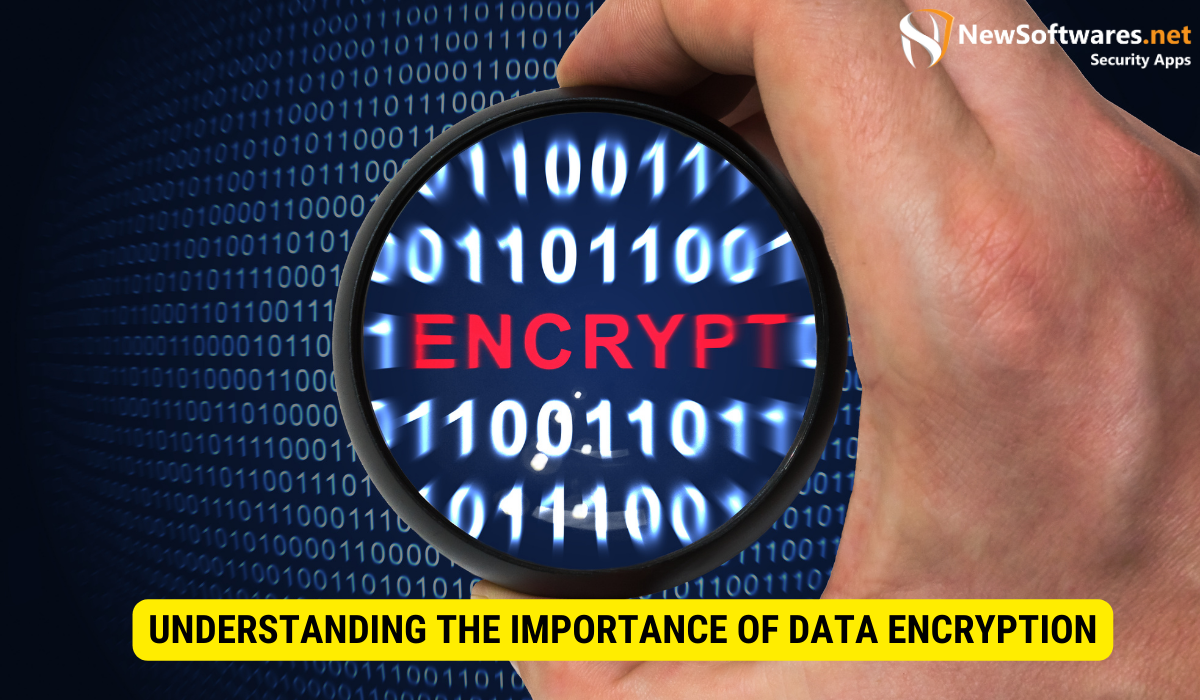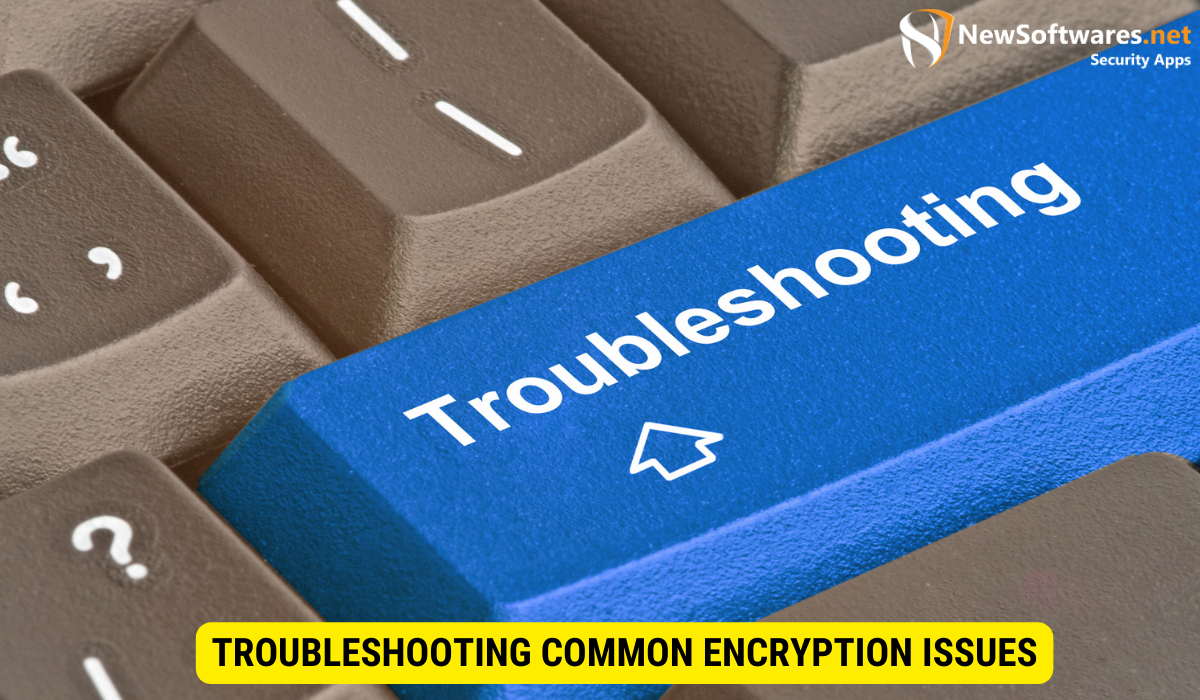Activating data encryption in Windows 8 is crucial for protecting sensitive information. It converts data into an unreadable format, enhancing security. It can be activated through the Control Panel, and encrypted files can be accessed with the decryption key. Data encryption is recommended to safeguard your data from unauthorized access.
Data security is a critical concern for Windows 8 users. With the increasing volume of sensitive information being stored on our computers, it is vital to take appropriate measures to protect it from unauthorized access. One such measure is data encryption. By activating data encryption in Windows 8, you can enhance the security of your files and ensure that even if someone gains access to your computer, they won’t be able to view your confidential data.
Understanding the Importance of Data Encryption

Data encryption plays a crucial role in safeguarding your data from prying eyes. It involves converting your data into a format that is unreadable without a secret decryption key. This means that even if someone manages to access your encrypted files, they won’t be able to make sense of the information they contain.
The Role of Encryption in Data Security
Data encryption provides an extra layer of protection to your sensitive information. In addition to firewalls and antivirus software, encryption helps to ensure that your data remains secure. This is especially important when sharing information over networks or storing it on portable devices such as laptops or USB drives.
Imagine a scenario where you are working remotely and need to access important files stored on your laptop. Without data encryption, there is a risk that if your laptop gets stolen or lost, the thief or anyone who finds it can easily access your files and gain unauthorized access to your sensitive information. However, with data encryption enabled, even if someone manages to get their hands on your laptop, they won’t be able to decipher the encrypted files without the decryption key.
Data encryption also plays a crucial role in protecting your privacy when transmitting sensitive information over the internet. When you send data over a network, it passes through various routers and servers, making it vulnerable to interception. However, if the data is encrypted, it becomes virtually impossible for anyone to understand the intercepted information without the decryption key.
Why Windows 8 Users Need Data Encryption
Windows 8 users are at risk of data breaches, just like any other computer user. Activating data encryption in Windows 8 can minimize this risk by making your files unreadable to unauthorized individuals. Whether you use your computer for personal or professional purposes, data encryption is a crucial step to protect your data.
One of the key advantages of data encryption in Windows 8 is the ability to protect your files even if your computer is compromised. Imagine a situation where a hacker gains unauthorized access to your Windows 8 computer. Without data encryption, the hacker can easily access and manipulate your files, potentially causing significant damage. However, if your files are encrypted, the hacker won’t be able to understand the contents of the files, rendering them useless.
Furthermore, data encryption in Windows 8 provides peace of mind when it comes to sharing sensitive information with others. Whether you are sending confidential documents via email or transferring files using a USB drive, data encryption ensures that only the intended recipient with the decryption key can access and understand the information. This is particularly important in professional settings where the confidentiality of client data or trade secrets is paramount.
In conclusion, data encryption is an essential tool for protecting your sensitive information from unauthorized access. Whether you are concerned about data breaches, protecting your privacy, or complying with industry regulations, enabling data encryption in Windows 8 is a crucial step to ensure the security of your data.
Basics of Data Encryption in Windows 8
Before diving into the activation process, it’s important to understand the fundamentals of data encryption in Windows 8.
Data encryption is a crucial aspect of modern computing, especially in an era where data breaches and unauthorized access are prevalent. Windows 8 recognizes the importance of data security and offers robust built-in support for data encryption.
What is Data Encryption?
Data encryption is the process of converting plain text, such as documents or emails, into an unreadable format using encryption algorithms. This ensures that even if unauthorized individuals gain access to the encrypted data, they will not be able to understand or make sense of it without the decryption key.
Encryption algorithms are complex mathematical formulas that transform data into a scrambled form. These algorithms use keys to encrypt and decrypt the data, with the encryption key being used to convert plain text into ciphertext, and the decryption key being used to reverse the process and convert ciphertext back into plain text.
Windows 8 employs various encryption algorithms, including Advanced Encryption Standard (AES), which is widely regarded as one of the most secure encryption algorithms available today. AES uses symmetric encryption, meaning the same key is used for both encryption and decryption, ensuring a seamless and efficient process.
How Does Windows 8 Support Encryption?
Windows 8 offers built-in support for data encryption, ensuring that your files and folders can be encrypted without the need for third-party applications. This simplifies the process and provides a more streamlined experience for users.
Windows 8 introduces a feature called BitLocker, which allows users to encrypt their entire hard drive or specific partitions. BitLocker utilizes AES encryption to protect the data, providing a high level of security. This feature is particularly useful for laptops and portable devices that may be at a higher risk of theft or loss.
In addition to BitLocker, Windows 8 also supports Encrypting File System (EFS), which enables users to encrypt individual files and folders. EFS uses a combination of symmetric and asymmetric encryption, providing a flexible and secure solution for protecting sensitive data.
Windows 8 also includes a Certificate Manager, which allows users to manage digital certificates used for encryption and authentication. Digital certificates play a vital role in verifying the identity of individuals or organizations involved in the encryption process, ensuring the integrity and authenticity of the encrypted data.
Furthermore, Windows 8 provides a user-friendly interface for managing encryption settings and accessing encrypted files. Users can easily enable or disable encryption, change encryption algorithms, and manage encryption keys, all within the familiar Windows environment.
Overall, Windows 8’s comprehensive support for data encryption empowers users to safeguard their sensitive information and protect against unauthorized access. By leveraging the built-in encryption features, users can enjoy peace of mind knowing that their data is secure, whether it’s stored on their local machine or transmitted over networks.
Steps to Activate Data Encryption in Windows 8
Now that you understand the importance and basics of data encryption, let’s walk through the steps to activate encryption on your Windows 8 system.
Preparing Your System for Encryption
Before you can activate data encryption, you need to ensure that your system is ready for the process. Start by creating a backup of all your important files and documents. Although the encryption process itself is generally safe, it’s always better to be prepared for any unforeseen circumstances.
Activating the Encryption Feature
Activating data encryption in Windows 8 is a straightforward process. Follow these steps to enable encryption on your system:
- Open the Control Panel by clicking on the Start menu and selecting Control Panel.
- Click on the “System and Security” option.
- Under “BitLocker Drive Encryption,” click on “Manage BitLocker.”
- Click on the drive you want to encrypt.
- Click on “Turn On BitLocker” and follow the on-screen instructions to complete the encryption process.
Managing Your Encrypted Data on Windows 8
Once you have activated data encryption on your Windows 8 system, it’s essential to know how to manage your encrypted files and ensure they remain accessible only to authorized users.
Accessing Encrypted Files
Windows 8 provides a seamless experience for accessing encrypted files. Just double-click the encrypted file, enter the decryption key when prompted, and the file will open as usual. It’s important to remember that you need to have the decryption key available to access the encrypted data.
Sharing Encrypted Files Safely
Sharing encrypted files with others can be done securely by providing them with the decryption key. You can either share the key directly or use a secure file-sharing platform that allows the recipient to access the file with their own decryption key.
Troubleshooting Common Encryption Issues

While the encryption process in Windows 8 is generally smooth, there may be some issues that you may encounter. Here are a couple of common problems and their solutions:
Dealing with Lost Encryption Keys
If you lose your encryption key, it can be challenging to regain access to your encrypted files. To avoid this situation, it is recommended to create a backup of your encryption key and store it in a secure location. If you have lost the key, you may need to seek professional help to recover your files.
Resolving Encryption Errors
If you encounter errors during the encryption process, it is recommended to update your system and software to the latest versions. Sometimes, encryption issues can be resolved by installing the latest updates and patches released by Microsoft.
Key Takeaways
- Data encryption provides enhanced security by converting your data into an unreadable format.
- Windows 8 supports data encryption without the need for third-party applications.
- The activation process involves preparing your system and enabling encryption through the Control Panel.
- Encrypted files can be accessed by entering the decryption key and can be securely shared by providing the key to authorized recipients.
- Troubleshooting encryption issues may require backing up your encryption keys and keeping your system updated.
Frequently Asked Questions
Q: Is data encryption in Windows 8 necessary?
A: Data encryption is highly recommended in Windows 8 to protect your sensitive information from unauthorized access.
Q: Can I access my encrypted files on another Windows 8 system?
A: Yes, you can access your encrypted files on any Windows 8 system as long as you have the decryption key.
Q: Can I disable encryption after activating it?
A: Yes, you can disable encryption on specific drives or folders through the Control Panel.
Q: What happens if I forget the encryption key?
A: Forgetting the encryption key can result in permanent data loss. It is essential to create a backup of your key and store it securely.
Q: Does data encryption impact system performance?
A: Data encryption may have a slight impact on system performance, but the added security outweighs any potential performance decrease.
Conclusion
In an era where data breaches are prevalent, activating data encryption is a crucial step towards protecting your sensitive information on Windows 8. By understanding the importance of data encryption, mastering the activation process, and learning how to manage encrypted files, you can ensure that your data remains secure even in the face of potential threats. Remember to back up your encryption keys, avoid losing them, and regularly update your system to ensure smooth encryption operations. With data encryption in place, you can have peace of mind knowing that your information is safe and secure.
